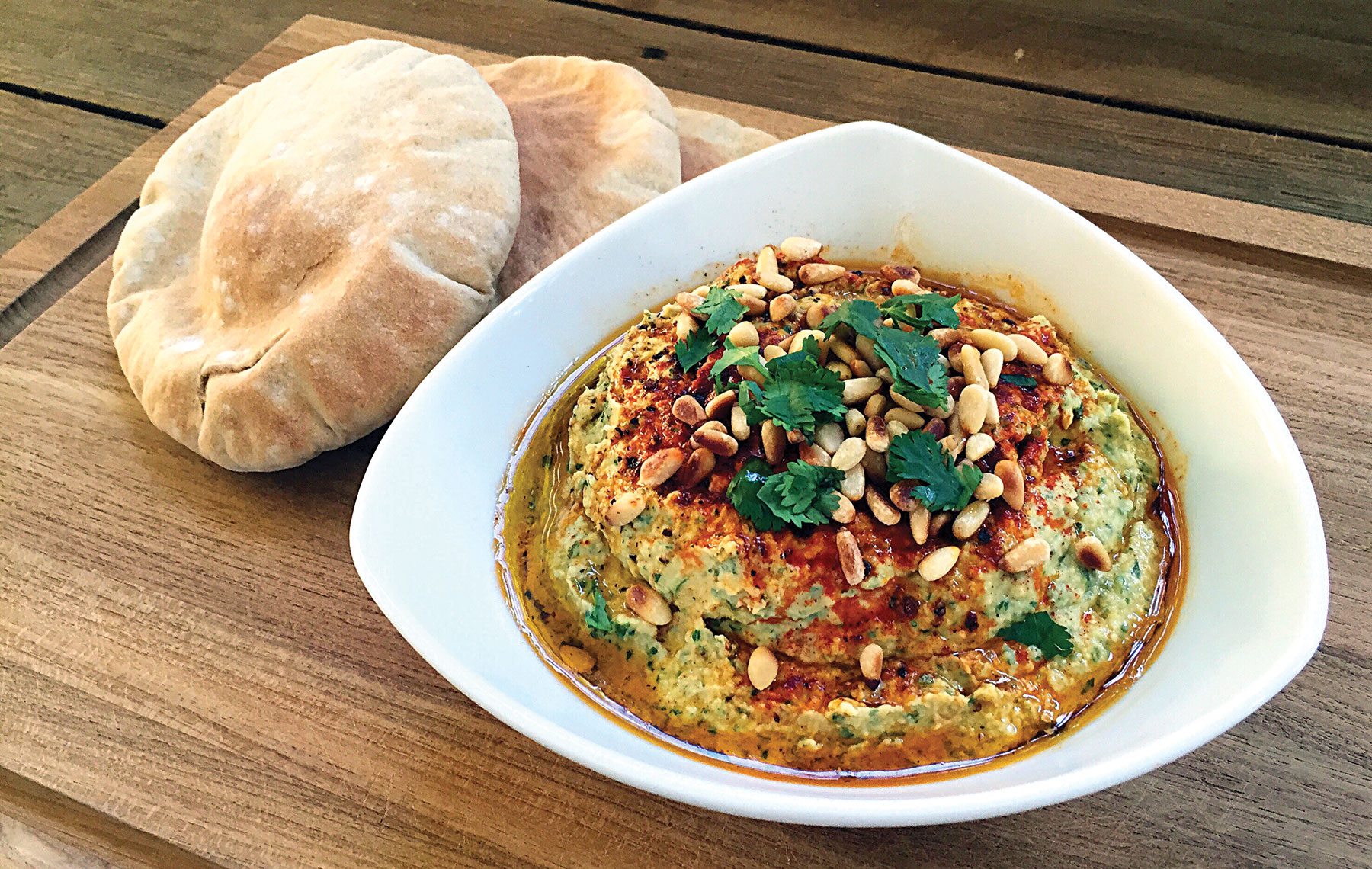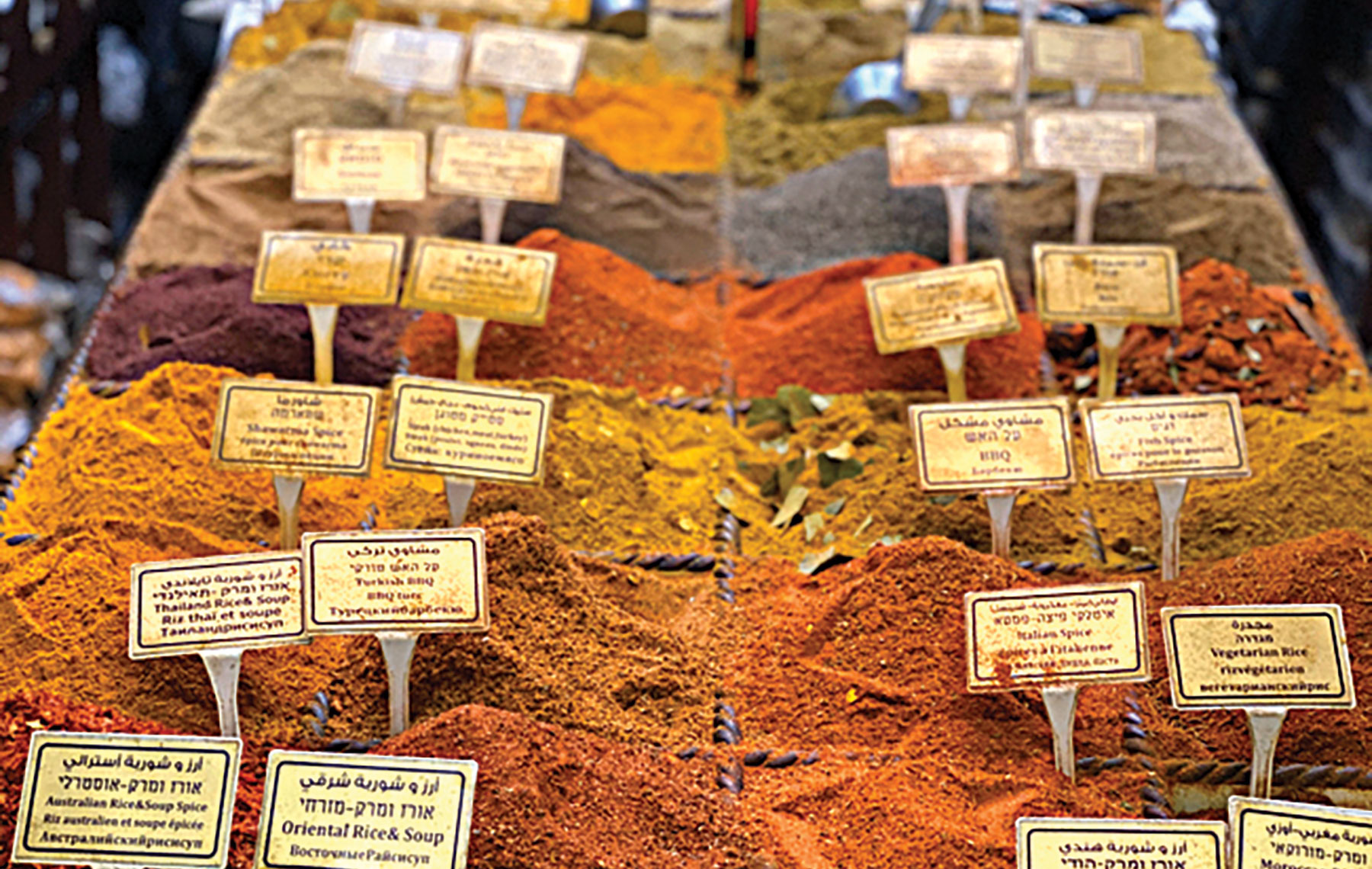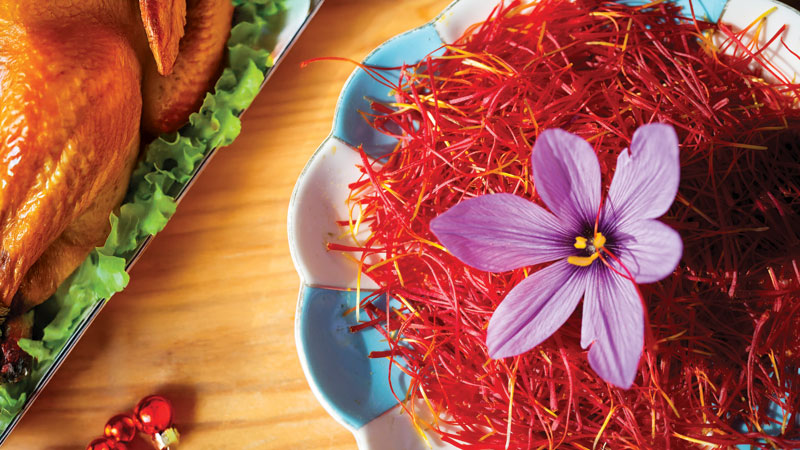
My students timed how long it took me to make this hummus (while explaining the procedure) and it was close to 3 1/2 minutes. I suspect by your second or third attempt, you will be just as fast.
There is a dichotomy to a fresh-tasting, quick-to-make hummus: Fresh and fast normally don’t go hand in hand.
Canned garbanzo beans (chickpeas) are required to make hummus quickly. By definition, “canned” food doesn’t taste fresh. Freshly cooked garbanzo beans that have soaked overnight and cooked on the stove for hours would be ideal. I know the value of bringing dried beans to life — before devouring them.
But dried garbanzo beans don’t always want to soften when I cook them. After 24 hours of soaking, 3 hours of cooking, draining, cooling, etc., I didn’t get past step one. This happened to me twice. Perhaps someday I’ll become adept at cooking dried garbanzo beans to make hummus from scratch. But for now, don’t judge. This is just where I am.
So if you’re looking for quick approach to making hummus, then this recipe is for you.
The addition of freshly squeezed lemon juice, extra-virgin olive oil, fresh cilantro and garlic will add a brightness to this dish.
Five-Minute Cilantro Hummus
1 20-ounce can garbanzo beans, drained and rinsed
2 tablespoons tahini
6 tablespoons freshly squeezed lemon juice, from about 3 lemons
1 clove garlic, coarsely chopped
4 tablespoons water
1 tablespoon, plus 2 tablespoons extra-virgin olive oil
1 handful fresh cilantro leaves
3/4 teaspoon, plus 1/4 teaspoon kosher salt
1/2 teaspoon ground cumin
Paprika, to taste
Ground pepper, to taste
Toasted pine nuts (optional)
Add the garbanzo beans, tahini, lemon juice, garlic, water, 1 tablespoon olive oil, cilantro leaves, cumin and 3/4 teaspoon kosher salt to the food processor. Zip until smooth. Add more water if needed for more creaminess.
Place hummus in a bowl, top with remaining olive oil, salt, ground pepper, paprika (and toasted pine nuts, if using), to taste.
Ideally: Cover with plastic wrap and refrigerate for an hour to chill and so flavors can marry.
Shopping for Spices in the Middle East
How: Pack double plastic bags in your luggage. When visiting, go to a local market that has a spice kiosk where the owner seems friendly and helpful. Be sure the store has a vacuum-pack machine. Assuming the owner speaks English, use local “thank you” (“toda” in Hebrew; “shukran” in Arabic) to show gratitude and acknowledge that you are a guest in their home. This will greatly improve the cultural exchange.
What: It’s OK to say, “I’m looking for spices for chicken or fish,” and then specify if you plan to grill, bake or stew the dish. Spice purveyors carry mixtures already prepared for the goods they love, so let sellers help you find what you want. Usually, they will let you taste.
That said, in the Middle East, I always also stock up on sumac (for Israeli salads), za’atar to sprinkle on hummus and labneh, as well as cumin and turmeric for many cooking needs.
Why: Spices are a gazillion times fresher in countries where they are used regularly.
They’re grown and ground regularly, they aren’t packaged in a factory, aren’t shipped across the world and then across the country on ships and trucks to sit on grocery store shelves until you come along. If you aren’t certain whether the freshness of spices affects your food, I’ve got news for you: It does.
Elana Horwich is the author of “Meal and a Spiel: How to Be a Badass in the Kitchen” and the founder of the Meal and a Spiel cooking school.























 More news and opinions than at a Shabbat dinner, right in your inbox.
More news and opinions than at a Shabbat dinner, right in your inbox.